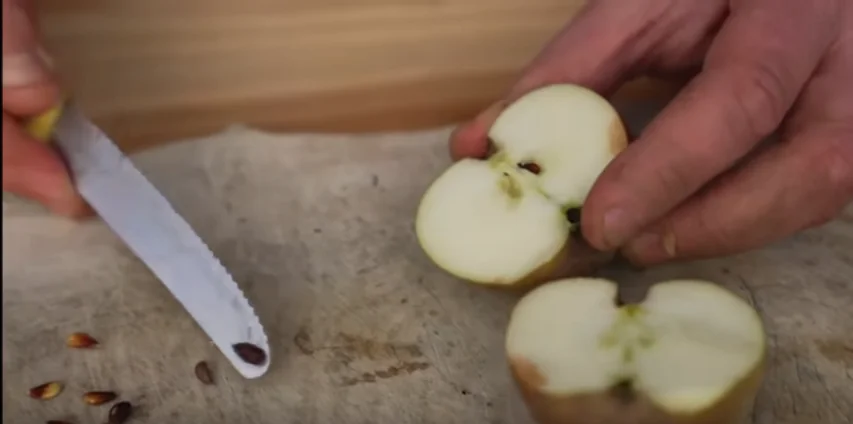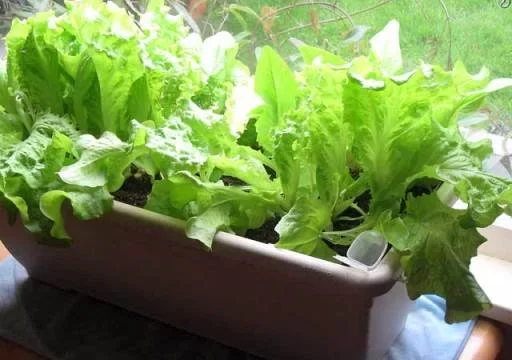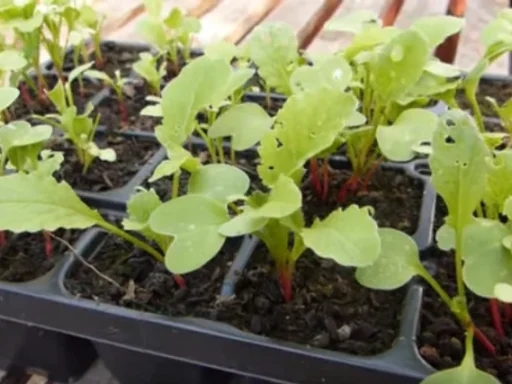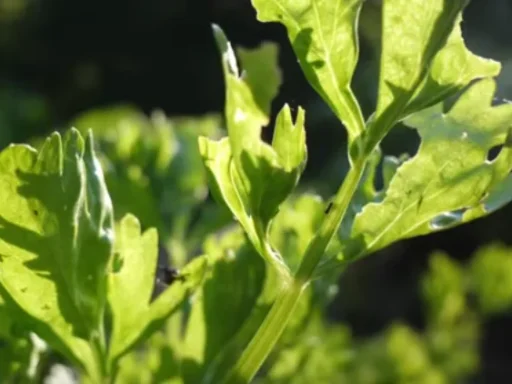Growing an apple tree from seed can be a rewarding project, providing fresh, homegrown apples right in your backyard. In this article, we’ll cover the steps to successfully grow an apple tree from a single pip (seed), from planting to caring for the growing seedling, to ensure your tree grows healthy and strong. You’ll also learn about potential challenges and alternative methods to consider, especially if you’re aiming for a more predictable harvest.
1. Starting with the Right Apple Seed
To grow an apple tree, start with a ripe apple, as its seeds (pips) are fully developed and ready to germinate. Choosing ripe seeds helps ensure the pips have the necessary nutrients to start growing, setting the stage for a strong seedling.
2. Chilling Period: Essential for Apple Seed Growth
Apple seeds require a period of chilling, a process known as cold stratification, to stimulate the germination process. This mimics the natural winter conditions that apple seeds would typically experience outdoors. To begin, wash the apple seeds, removing any leftover flesh, and place them on a damp paper towel. Fold the towel over the seeds and seal them in a plastic bag, leaving a small opening for air exchange. Store this bag in the refrigerator for about six to eight weeks, checking occasionally to keep the towel moist.
3. Planting the Seeds
Once the chilling period is complete, the seeds are ready to be planted. Select a pot filled with seed-starting soil and sow your seeds about half an inch deep. After covering them with soil, water them thoroughly. Place the pot in a warm, sunny area to stimulate faster growth, ideally at a temperature around 70-75°F (21-24°C). Within two weeks, the seeds should start germinating.
4. Transplanting Seedlings
Once the seedlings reach around 4 inches (10 cm) in height, they should be transplanted into larger pots. This step allows the roots to expand, providing the young trees with the space they need to grow. Keep the seedlings in warm, sunny conditions until the outdoor temperatures are consistently warm and suitable for transplanting.
5. Understanding the Benefits and Challenges of Growing Apples from Seeds
Growing apples from seeds can be a fun experiment, but the results are often unpredictable. Apple trees grown from seed do not always produce fruit identical to the parent apple, which is due to the cross-pollination that occurs in apple orchards. For more reliable results, many people prefer grafted apple trees, which are grown from cuttings of specific apple varieties grafted onto rootstocks that control tree size and ensure predictable fruit quality.
6. Managing Tree Growth
Most nursery apple trees are grafted onto rootstocks, which limit the tree’s size. When growing apples from seed, you will not have this advantage, meaning your tree could reach up to 30 feet tall. Dwarf or semi-dwarf rootstocks are preferable if you want a smaller, manageable tree, which is why many gardeners purchase grafted apple saplings.
7. Expected Time to Fruit
Patience is essential when growing apples from seeds. Apple trees grown from seed can take up to a decade to bear fruit, compared to grafted saplings, which can produce apples within two to four years. While growing from seed can be enjoyable, it does require a long-term commitment.
8. Alternative Approach: Grafted Apple Trees
For those interested in growing apples with guaranteed results and reduced wait time, purchasing a grafted apple tree is recommended. Grafted trees are typically sold with a mature rootstock and a scion, which is the desired apple variety. Grafted trees are also available in self-fertile varieties, meaning they do not require another apple tree nearby to pollinate and produce fruit.
9. Planting and Caring for Your Grafted Apple Tree
If you decide to plant a grafted apple tree, the best time to do so is during the fall, though container-grown trees can be planted any time of year as long as the ground is not frozen. When planting, dig a hole that is three times the diameter of the tree’s root ball. Carefully remove the tree from its container, spread out the roots, and place it in the hole, making sure the rootstock graft union remains above ground level.
10. Mulching and Support
After planting, add mulch around the base of the tree to help retain moisture and prevent weeds. Keep the mulch a few inches away from the tree trunk to prevent rot. In windy or unstable conditions, consider staking the young tree for support during its first years, which will help the roots establish.
Benefits of Growing Your Own Apple Tree
Growing apples at home has many advantages. Apple trees produce large amounts of fruit, making them a worthwhile investment for any garden. With proper care, a single apple tree can yield hundreds of apples each season. Apples are versatile, with many varieties suitable for freezing, juicing, or fresh storage, allowing you to enjoy your harvest year-round.
Frequently Asked Questions
- How long does it take for an apple tree to bear fruit from seed? Growing an apple tree from seed can take anywhere from 7 to 10 years before it bears fruit.
- Do I need more than one apple tree to produce fruit? Many apple trees require cross-pollination from another tree, but self-fertile varieties can produce fruit independently.
- What is cold stratification, and why is it necessary? Cold stratification mimics winter conditions and triggers the apple seeds to germinate. Without it, seeds may not sprout.
- Can I plant apple seeds directly in the ground? Yes, but starting them indoors with controlled stratification is often more effective for germination.
- How big will an apple tree grow from seed? An apple tree grown from seed can reach up to 30 feet tall, but grafted varieties on dwarf rootstocks are usually smaller.
- What’s the difference between growing from seed and buying a grafted apple tree? Grafted trees provide more reliable fruit, faster production, and controlled growth size compared to seed-grown trees.
- When is the best time of year to plant an apple tree? Fall is ideal, but container-grown apple trees can be planted year-round if the ground is not frozen.






